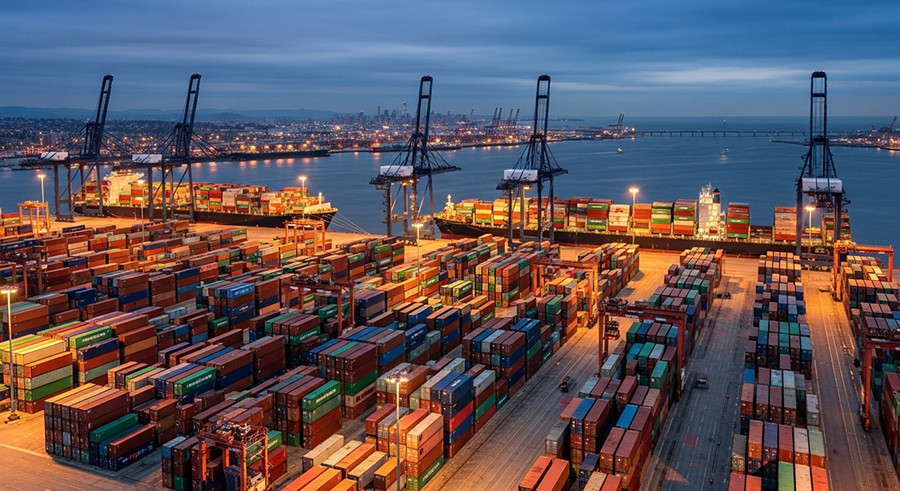The Impact of The Tariffs in The US
Selling into the US just got trickier for the UK. On August 29, 2025, the White House ended the long-standing $800 de minimis waiver for low-value imports, meaning that most small B2C parcels are now subject to duty and may incur additional carrier handling fees. U.S. Customs and Border Protection (CBP) has confirmed enforcement and system changes, and early reports indicate that postal networks have been scrambling to adapt.
This sits on top of two earlier moves that also raise landed costs for certain products. In June 2025, the administration doubled national-security tariffs on steel and aluminium under Section 232, lifting headline rates from 25% to 50% for covered goods and derivatives. Even in late 2024, the USTR finalised a fresh wave of Section 301 increases on China-origin goods. Most notably, they pushed electric vehicles to 100% and elevated tariffs on batteries, solar cells, semiconductors and certain critical minerals.
So, what does this all mean for UK shippers? The key takeaways are straightforward. Assume duty on small parcels, tighten HS code and origin data, and consider duties-paid services, so customers aren’t hit with surprise charges or delivery holds at the door.
What changed in 2025 (and late 2024)?
Three policy shifts have reshaped the costs of shipping small parcels into the United States. We’ve covered them briefly, but here are some more details. First, the suspension of the long-standing $800 de minimis waiver: it effectively ended duty-free entry for most low-value B2C parcels and, as a result, several postal networks temporarily curtailed US services as they adapted to the new rules.
If you were relying on sub-$800 orders to avoid duties, that era is over. Then, there’s the doubling of national-security tariffs on steel and aluminium under Section 232.
Even if your finished good is UK-origin, mixed or third-country components can still trigger higher effective costs where the 232 measures apply, so origin analysis at the component level matters more than ever.

Who is affected among UK shippers?
UK sellers feel this most at the small-parcel end. Brands sending low-value B2C orders that previously relied on the $800 de minimis now face duty and carrier handling fees on almost every shipment.
As the exemption was suspended nationwide from 29 August 2025, Customs and Border Protection (CBP) updated its systems and guidance to enforce it. That’s why some postal operators temporarily limited or paused US services while they adapted.
Marketplace and D2C sellers using DAP are especially exposed. Surprise charges and payment holds at delivery drive refusals and re-shipment costs, so many will need to switch to duty-prepaid options.
Manufacturers and retailers whose goods are made in China (even if dispatched from the UK) are affected by the late-2024 Section 301 increases, with EVs subject to 100% and higher rates on renewable materials.
Immediate actions for UK sellers
So, what steps can UK shippers take to address these ongoing issues?
1. Switch key US lanes to duties-paid (DDP) services where possible.
Why? As we’ve learnt, most small parcels no longer sail through duty-free. If you ship DAP, your customer may receive surprise payment requests, holds, and refusals.
How? Use services that let you pre-pay duties/fees at checkout or on your shipping label. Surface the all-in price, so nothing is collected at the door.
Please check with your ParcelBroker account team to determine which carriers currently support true DDP shipments into the US.
2. Audit your top SKUs for country of origin and HS code
Why? Tariff liability is driven by where the product is made, and 2024’s Section 301 sharply raised rates on many China-origin goods (e.g., EV-related items, batteries, some electronics inputs).
How? For each bestselling SKU, confirm the manufacturing country and correct HS code on the commercial invoice.
3. Plan around postal disruptions and choose reliable service levels.
Why? As we know, several postal operators temporarily curtailed US services when the rules changed. Backlogs and routing tweaks can resurface.
How? For time-sensitive goods, prefer tracked express/courier services with clear processes. You can compare couriers right here, with ParcelBroker.

Compare cost-effective courier quotes today with ParcelBroker!
Simplify US shipping by comparing cost-effective courier quotes today with ParcelBroker.
Get instant prices from trusted carriers, see duties and fees up front, and don’t forget to choose services that support DDP! It doesn’t matter if you’re sending five parcels a week or five hundred; with our services, you’ll get transparency and expert support when you need it.